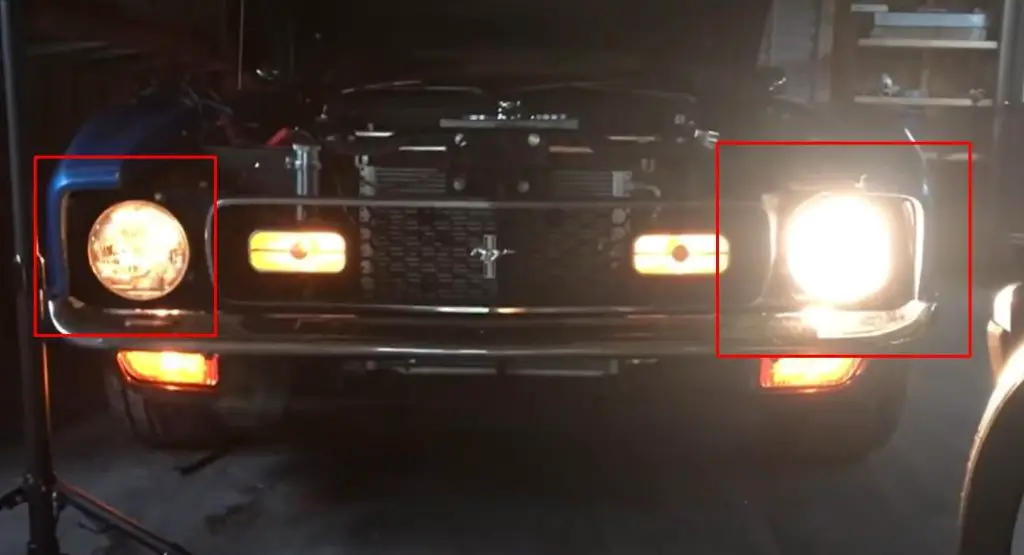One headlight may be brighter than the other due to uneven headlight alignment or differing bulb brightness. Unequal wear or faulty installation can also contribute to the imbalance.
Car owners often encounter the issue of one headlight appearing brighter than the other. This common problem can arise from various factors that affect the performance and functionality of vehicle headlights. Imperfect headlight alignment is a chief cause, where one headlight beam points higher than the other, making it seem brighter.
Another reason could be the difference in bulb brightness, either because of varying types of bulbs or because one bulb is nearing the end of its lifespan. It’s also possible that environmental factors like dirt or moisture inside the headlight housing could be distorting the light output.

Ensuring both headlights are properly maintained is vital for optimal visibility and safety on the road. Regular checks and timely replacement of bulbs can help maintain consistent headlight brightness levels. Let’s explain ” Why is 1 Headlight Brighter Than the Other?”
Introduction To Headlight Brightness Discrepancies
Headlight brightness discrepancies often catch drivers off guard. One headlight shines like a beacon, while its partner seems dim and lackluster. Awareness why this happens is essential for both vehicle maintenance and road safety. By exploring the complexity of headlight functionality and addressing common safety concerns, drivers can take steps to ensure that their vehicle’s lighting is both effective and compliant.
Overview Of Headlight Functionality
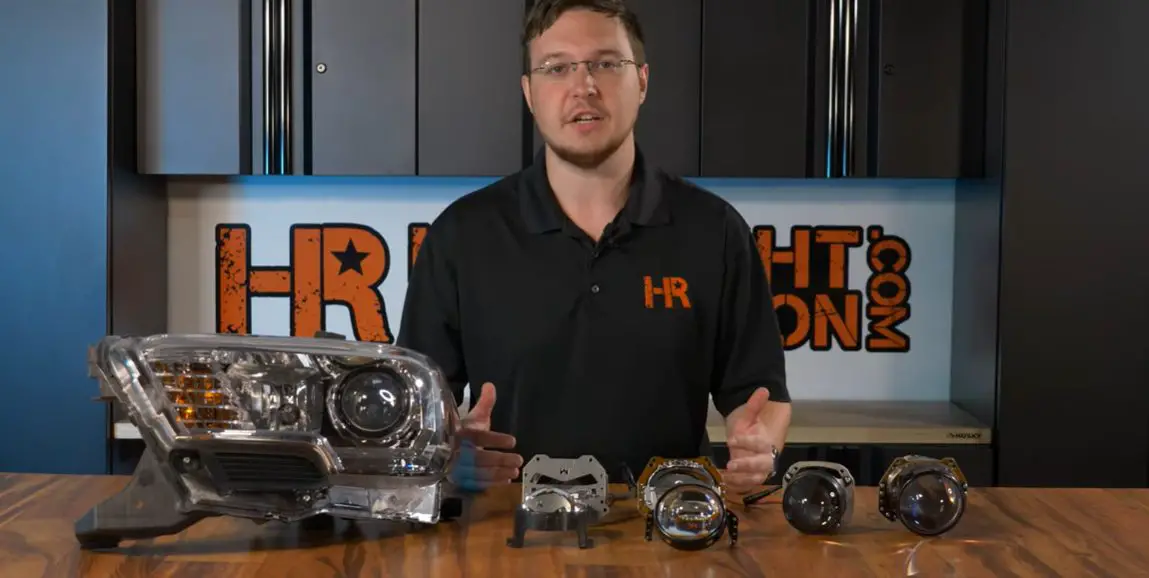
Headlights are vital for visibility during night driving. They allow you to see the road and notify others of your presence. A car’s headlights rely on several components to function:
- Bulbs: They produce the light.
- Reflectors: They focus the beam.
- Lenses: They direct the light onto the road.
Brightness levels can vary due to many factors, like bulb age or voltage differences. It’s essential to detect these variations early to maintain optimal lighting.
Common Perceptions And Safety Concerns
Drivers often assume headlights always perform equally. Uneven brightness raises concerns. A dim headlight reduces visibility and can be mistaken for a motorcycle, increasing the risk of accidents. Regular checks and maintenance are key to ensuring both headlights function at the same brightness level and keep the road safe for everyone.
Factory Design And Manufacture Infelicities

Ever noticed that one headlight seems to shine brighter than the other? It’s not just your eyes playing tricks on you. Often, the reason lies deep within factory design and manufacturing precision, or the lack thereof. Let’s delve into why this phenomenon occurs and trace it back to its roots in the car-making process.
Asymmetrical Design Factors
Bold design choices often lead to functional disparities. Various cars come with headlights intentionally set at different angles or intensities. This design is to improve road visibility and reduce glare for oncoming drivers.
- Intentional angling of one headlight lower than the other.
- Varying reflector shapes between the left and right headlights.
- Different bulb positioning to better illuminate road signs or the verge.
Variations In Manufacturing Processes
No two manufacturing processes are perfectly alike, and slight variance is natural. This variation can influence headlight brightness in several ways:
| Manufacturing Aspect | Effect on Headlight Brightness |
|---|---|
| Bulb alignment | Misalignment affecting light focus |
| Reflector shaping | Imperfections that change light direction |
| Lens clarity | Variability in transparency or haze. |
Each of these factors, be it an asymmetrical design decision or a manufacturing inconsistency, plays a part in why one headlight might outshine the other.
Headlight Alignment Issues
Driving at night calls for clear vision. One headlight brighter than the other often means alignment problems.
It’s not just an annoyance; it’s a matter of safety. Let’s explore the importance of proper headlight alignment.
The Role Of Proper Alignment
Headlights guide the way, and when properly aligned, they perfectly illuminate the road ahead. Each headlight
must point straight forward and at the right angle to achieve this. Even a small misalignment can cause noticeable
light differences. Proper alignment ensures both headlights shine with equal brightness and distance.
Consequences Of Misalignment
Ignoring alignment issues can lead to trouble. The immediate effects:
- Reduced visibility: Uneven lighting makes it hard to see the road and spot hazards.
- Driver fatigue: Unequal light strains the eyes, causing quicker tiredness.
- Safety risks: Misaligned lights can blind oncoming traffic, increasing accident chances.
Alignment checks should be part of regular car maintenance. Fixing misalignment can prevent these
issues and keep the road safe for everyone.
Electrical Problems Affecting Headlight Output
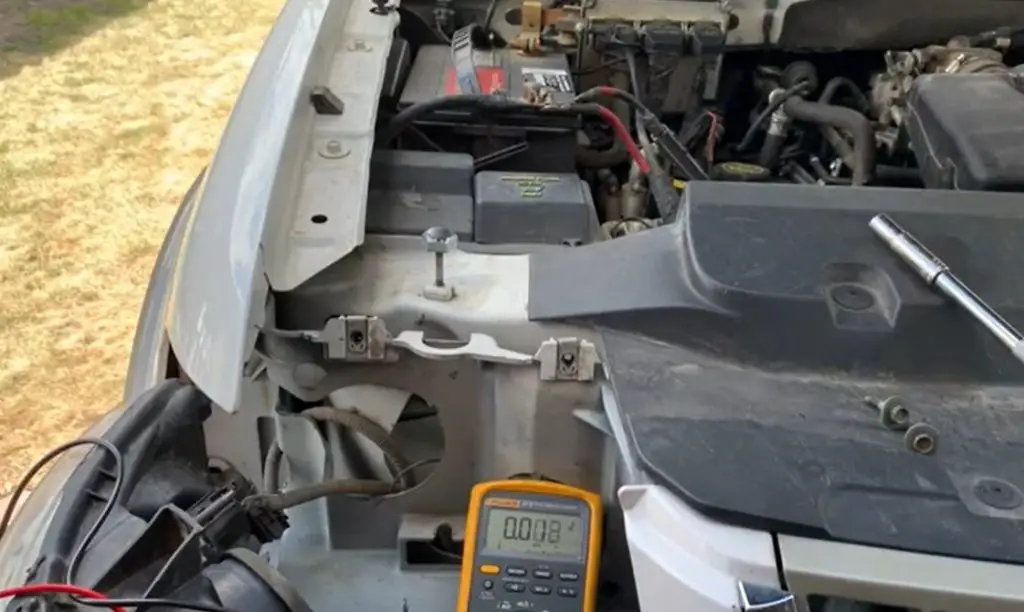
Uneven headlight brightness can be puzzling. Various factors lead to one headlight shining brighter than the other. Often, the culprit lies within the car’s electrical system. Let’s explore the common electrical problems that can cause this headlight issue.
Voltage Irregularities And Connections
Voltage irregularities disrupt headlight performance. Headlights demand consistent voltage to function properly. Issues such as a failing alternator or battery problems can affect voltage. This, in turn, leads to different brightness levels.
- A weak battery may not supply enough power.
- A malfunctioning alternator might deliver inconsistent voltage.
- Corroded battery terminals hinder proper power flow.
Connections also play a role. Loose or damaged connections result in fluctuating power to the headlights. Regular checks can prevent connection-related problems.
Grounding Issues
Headlight grounding is vital for uniform brightness. Poor grounding can lead to one headlight appearing dimmer. It creates resistance in the electrical path, diminishing the power that reaches the headlight. Signs of grounding issues include:
| Sign | Possible Cause |
|---|---|
| Flickering | Loose ground connection |
| Dimness | Corroded ground wire |
| Intermittent operation | Fractured ground wire |
To fix grounding issues, inspect and clean ground connections. Ensure wires are intact. If needed, replace any corroded or broken parts. A stable ground connection guarantees the needed current flows to both headlights.
Bulb Quality And Condition Disparities

Ever wonder why one car’s headlight shines brighter than the other? The answer often lies within bulb quality and condition disparities. Just like any other product, headlights can vary in performance due to several factors.
Impact Of Bulb Age And Wear
Headlight bulbs are not immune to time. Age and wear can greatly impact their brightness. A new bulb will often outshine an older counterpart, even if both are designed identically. This is because, over time, bulbs can develop deposits that dim their output. Normal usage can also lead to filament degradation which reduces brightness considerably.
- Dimmed output due to deposit accumulation
- Filament degradation with regular use
- Varying life spans affect performance consistency
Variations In Bulb Manufacturing
Not all bulbs are created equal. Despite similar external appearances, variations in the manufacturing process can cause discrepancies in performance. Two bulbs from different batches or brands may not match in brightness. Factors like slight differences in filament construction or glass quality can be culprits. Most drivers do not notice this during purchase.
| Manufacturing Factor | Impact on Headlight Brightness |
|---|---|
| Filament Construction | Alters light intensity and focus |
| Glass Quality | Influences light transparency and dispersion |
Aftermarket Modifications And Upgrades
Many car enthusiasts turn to aftermarket modifications to enhance their vehicle’s performance and appearance. One common upgrade is the headlight system. But these enhancements can sometimes lead to uneven headlight brightness. Let’s explore why this occurs.
Installation Of Aftermarket Kits
Installing aftermarket headlight kits can boost your car’s visual appeal and improve road visibility. These kits often come with powerful bulbs and new housing. It’s crucial to ensure the installation process is done correctly.
- Choose high-quality kits compatible with your vehicle model.
- Follow the manufacturer’s instructions precisely.
- Secure all connections to prevent loose wires.
- Test the lights to confirm consistent brightness levels.
Unintended Consequences Of Modifications
Modifying your car’s lighting system can lead to unintended issues. One headlight may shine brighter than the other. This can happen for several reasons:
| Reason | Explanation |
|---|---|
| Uneven Power Supply | If wires are not securely connected, power may not distribute evenly. |
| Mismatched Bulbs | Different bulb types can emit varying levels of light. |
| Improper Installation | Bulbs not properly seated can reflect light inconsistently. |
| Faulty Equipment | Sometimes the kit itself may have defects affecting light output. |
Address these issues promptly to ensure safe and balanced lighting on your vehicle.
Environmental And Usage Factors
Have you ever noticed your car’s headlights shining unevenly? One brighter than the other? It’s not just you. Many factors contribute to this curious case of uneven illumination, and they lie in the environment and the way we use our cars. Let’s delve into these aspects and see just how they affect our headlights.
Effects Of Exposure To Elements
The great outdoors can be harsh on car headlights. Over time, various elements take a toll on them:
- Sunlight: UV rays can fade and haze the headlight lens.
- Moisture: Gets inside and causes fogging or electrical issues.
- Temperature: Extreme cold or heat wears out bulbs differently.
These factors can make one headlight appear dimmer than the other.
Influence Of Driving Habits
How you use your car also plays a big part in headlight balance:
- City vs. Highway driving: More frequent on and off cycles in the city can shorten bulb life.
- Rough Roads: Bumps and vibrations can damage one headlight more, especially if it’s weaker to start with.
- Usage: If you use one set of lights more often, like high beams or fog lights, it may dim sooner.
Balanced driving habits help maintain even headlight brightness.
Headlight Housing And Lens Conditions
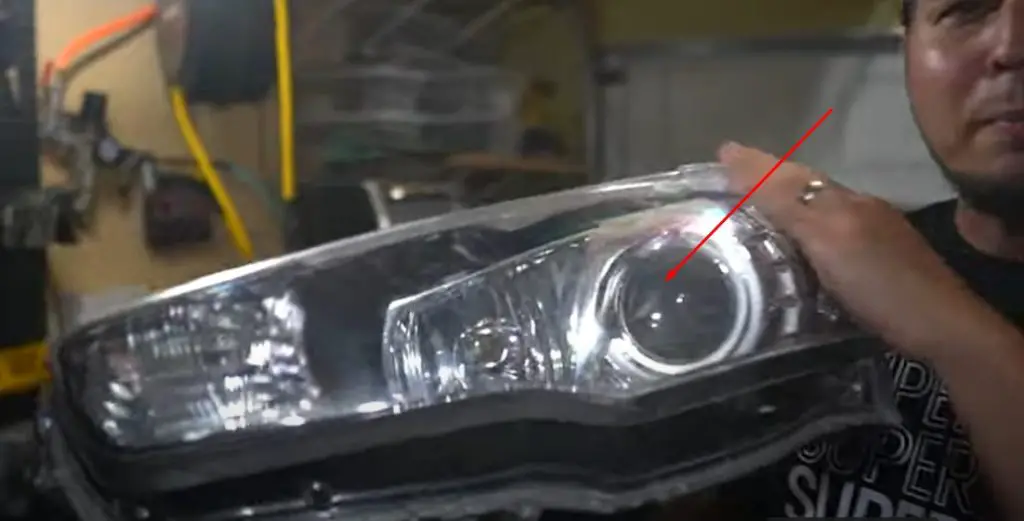
Your vehicle’s headlights are pivotal for nighttime visibility. Uneven brightness raises safety concerns. Often, the cause lies within the headlight housing and lens conditions. Insighting these factors is essential for optimal illumination. Let’s explore common culprits behind one headlight shining brighter than the other.
Degradation And Damage To Headlight Housing
Over time, headlight housing can degrade. Exposure to the elements and minor collisions are frequent offenders. Road debris may lead to scratches or cracks. This damage disrupts light distribution. A compromised housing often results in a dimmer appearance when compared to an undamaged counterpart. Regular checks can spot early signs of wear and tear.
- Check for cracks: Small fissures can let in moisture.
- Look for discoloration: This indicates material breakdown.
- Inspect for impact damage: Even a minor bump can affect alignment.
Clouding And Yellowing Of Lens Material
Clouding and yellowing of the headlight lens impact brightness. Plastic lenses are prone to oxidation. The harsh sunlight turns them yellow and hazy. This impedes light output, making one headlight look brighter. Maintaining lens clarity is essential. Fortunately, cleaning kits and restoration services are readily available. They help restore lens transparency for even headlight brightness.
| Cause of Yellowing | Impact on Brightness | Possible Solution |
|---|---|---|
| Oxidation | Reduces light output | Lens restoration kit |
| UV Radiation | Causes discolouration | UV protective coating |
Regulation And Legal Requirements
On the road, safety is paramount. One critical aspect of vehicle safety is proper headlight function. Uneven headlight brightness can cause visibility issues. Regulations enforce a standard level of headlight brightness to ensure safety for all road users.
Let’s dive into the standards and enforcement measures in place.
Standards For Headlight Brightness
Governments worldwide have set strict standards for headlight brightness. These standards aim to balance ample night-time visibility without blinding oncoming traffic. Below are key points about brightness regulations:
- Minimum and maximum luminosity levels help keep roads safe.
- Consistency in light output between left and right headlights is mandatory.
- Headlights must allow clear road visibility up to a specific distance.
Vehicles with one headlight brighter than the other can fail a roadworthiness test. Car owners must meet these headlight criteria.
Enforcement And Compliance Issues
The enforcement of headlight regulations lies with transportation authorities. Yet, some drivers face challenges with compliance. Causes for uneven headlight brightness can be varied, with some being easy to fix and others not. Encountering these issues can mean failing an inspection and potentially receiving fines.
| Issue | Potential Solution |
|---|---|
| Burnt-out Bulb | Replace with a new, compliant bulb |
| Electrical Problems | Inspect wiring and repair |
| Dirty or Faded Lenses | Clean or restore headlight lenses |
Regular vehicle inspections and timely maintenance can help prevent these issues. Keeping headlights in check ensures not only legal compliance but also road safety for everyone.
Diagnostic And Troubleshooting Techniques
Uneven headlight brightness often stems from overlooked issues. Regular checks can prevent reduced visibility. This section delves into diagnostic and troubleshooting techniques to pinpoint why one headlight might shine brighter than the other.
Methodology for Identifying Issues
Methodology For Identifying Issues
Determining the root cause is key. Begin by noting when the issue occurs. Next, inspect both headlights closely.
- Check for dirt or damage. Headlights covered in grime or with damage will have poor light output.
- Evaluate bulb condition. A dimming bulb could signal it’s time for a replacement.
- Assess electrical connections. Faulty wiring can affect headlight brightness.
- Verify alignment. Misaligned headlights project light unevenly.
Tools and Resources for Diagnosis
Tools And Resources For Diagnosis
Accurate diagnosis requires certain tools and resources. Arm yourself with the following:
| Tool | Use |
|---|---|
| Cloth and Cleaner | For cleaning headlights. |
| Replacement Bulbs | To test if the bulb is the issue. |
| Multimeter | To check electrical connections. |
| Alignment Tools | To adjust headlight beams. |
Follow a systematic approach for best results. Use a multimeter for live tests. Be cautious with electrical systems. Save complicated maneuvers for professionals.
Maintenance And Repair Recommendations
Noticing one headlight shining brighter than the other can signal the need for maintenance and repair. Awareness how to maintain and repair your headlights is key to ensuring both are functioning optimally. Follow these recommendations to keep your headlights balanced and bright.
Routine Maintenance Tips
- Check Headlight Bulbs: Regularly inspect to ensure they are functioning properly.
- Clean Lenses: Dirt and grime reduce brightness; clean for maximum light output.
- Ensure Proper Alignment: Misaligned headlights can appear dimmer. Adjust to correct.
- Inspect Electrical Connections: Corrosion or loose wires lead to irregular light.
- Replace in Pairs: When one bulb goes out, replace both to maintain equal brightness.
Professional Vs. Diy Repair Approaches
| Professional Repair | DIY Repair |
|---|---|
| Access to advanced diagnostic tools. | Cost-effective if you have the skill. |
| Guarantee on workmanship and parts. | Online tutorials are available for guidance. |
| Time-saving as experts handle the repair. | Personal satisfaction in solving the issue. |
| Recommended for complex electrical issues. | Suitable for simple maintenance like bulb replacement. |
Choose a professional for complex issues beyond your skill level. DIY can be an option for basic fixes as long as you follow manufacturer guidelines and safety precautions.
Ensuring Balanced Headlight Brightness
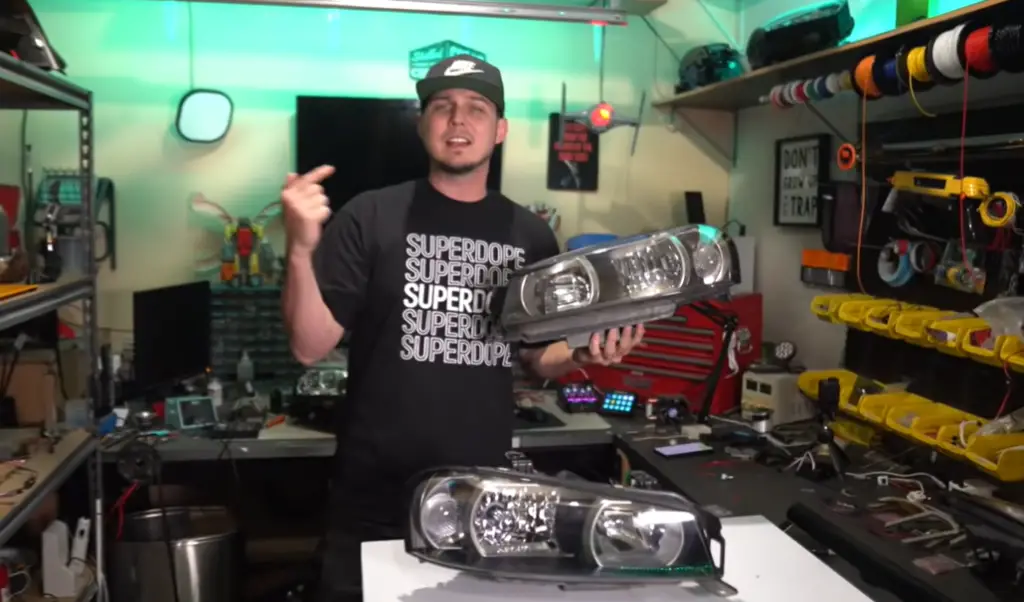
Ensuring that both headlights shine with equal brightness is important for safe driving. Uneven lighting can reduce visibility and may distract or confuse other drivers. In the conclusion of our discussion on headlight brightness disparities, we will underline key practices to maintain consistent and safe headlight function.
Summarizing Key Factors
- Bulb type or age differences often lead to uneven brightness.
- Electrical issues may impact how much power reaches each headlight.
- Dirt or damage to headlight lenses affects light output.
- Incorrect headlight alignment results in uneven beam patterns.
Final Thoughts On Maintaining Headlight Health
To keep headlights properly functioning, consider these steps:
- Regularly check for wear and tear and replace bulbs in pairs.
- Clean the lenses to remove obstructions that dim the light.
- Get a professional to align the headlights for optimal performance.
- Address electrical issues promptly to prevent further complications.
By focusing on these actions, drivers can achieve a safe and balanced headlight brightness, ensuring better night visibility and a safer drive for everyone on the road.
Frequently Asked Questions On Why Is 1 Headlight Brighter Than The Other
Why Is One Of My Headlights Brighter Than The Other?
One headlight may be brighter due to different bulb types, uneven wear, or a faulty connection. Ensure both headlights use the same bulb model and check for any electrical issues.
Why Is My Headlight Dim On One Side?
A dim headlight on one side could be due to a burnt-out bulb, poor ground connection, or corroded wires. Check the headlight assembly and replace any faulty components.
Why Is One Of My Headlights Higher Than The Other?
One of your headlights is likely higher due to misalignment or uneven headlight positioning. Regular wear or impact can cause this issue. Ensure both headlights are correctly aligned for optimal visibility and safety.
Are Headlights Supposed To Be Uneven?
Headlights are designed with a slight unevenness; the right headlight is often aimed lower to avoid blinding oncoming drivers. This asymmetrical alignment improves road safety during nighttime driving.
Conclusion
Uneven headlight brightness can reduce your nighttime visibility and signal underlying issues. Regular maintenance is key to ensuring both headlights shine equally bright. Don’t overlook this detail; it could be vital for your safety on the road. Address disparities promptly for the clearest journey ahead.

